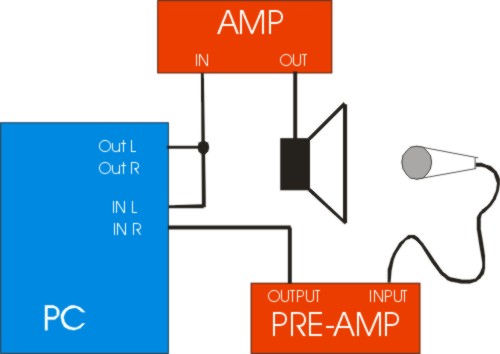
How to measure Impulse Response?
The first measuremten procedures for IR measuremten are quite similar to the
knocking procedure from the prior chapter.
They just tried to generate a very short, loud sound. Therefore they used
things like pistols, explosives, pieces of wood which they clapped together,
and recorded the IR at the desired location in the room.
To get the delaytime the measurement start has to be triggered properly.
As the first pc's appeared on the scene, they tried to use
the pc as the source of small and loud impulses which were replayed
using an speaker.
Now it was possible to measure the IR exciteting the room via the installed speaker systems.
BUT the results are not very fine.
This was because of the lack of energy 'pumped' into the room.
The older excitation methods produced SPLs up to 140dB,
but the energy generated by a speaker was much less,
and therefore the measurement was spoiled by external noise,
leading to the need of much averaging.
In theory, it was known that the IR can be calcultated by comparing
the excitationsignal with the measurementsignal, using a simple
but very time expensive calculation called crosscorrelation.
Using a wideband, noise like excitationsignal would allow much more energy in the room,
which would solve the noise problem.
But in those days the calculation power needed
for doing that kind of calculations was neither available nor payable.
There were some approaches to solve this problem, one is TDS (time delay spectrography),
which in short terms, measures the frequency response (both amplitude and phase), and
then calculates the IR (when needed).
At the other hand some people developed the theory about using MLS sequences for audio
measurement, and discovered that the MLS has some features, which allowed a very much quicker
execution of the crosscorrelation, and made impulse response mesaurement using PCs possible.
Today, at the days of ultrafast PCs, there are many more ways to get the impulseresponse,
but the mls remains one of the 'state of the industry' methods for measuring the IR.
The picture on the right shows the normal wiring for doing an IR measurement using a pc generated
signal. Take notice of the direkt loop back to one of the inputchannels,
which is important for exact timing, which is not so easy on normal pc soundcards.
